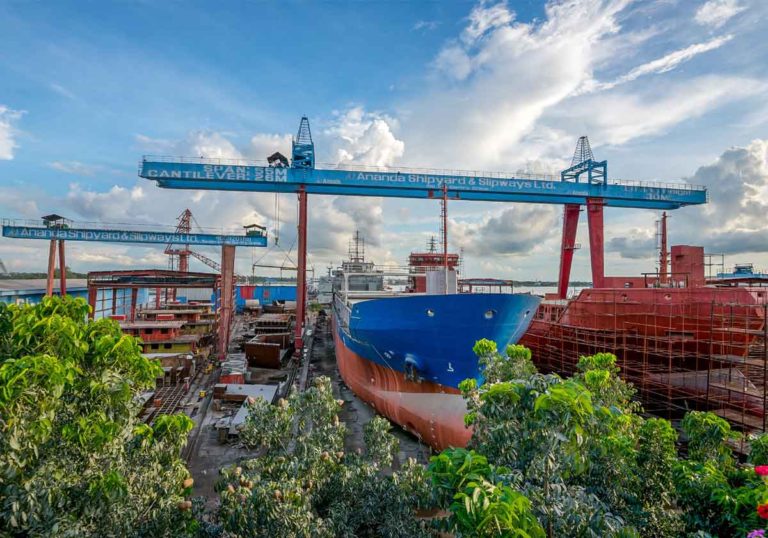

However, while the inland ship building was at its nascent stage, Bangladesh got its first exposure of international ship building in 1979. The Bangladesh Navy took over the management of the shipyard in October, 1999. A decision was taken to transfer this yard to the Ministry of Defense. In the mid 80’s, the slipway carriage of the shipyard was broken in an accident. Six thousand and fifty new ships were built in this shipyard. Garbage trucks and foot-over bridges are being built by this shipyard. Many organizations got their work done in this shipyard. Engineering equipment, pumps for irrigation, cargo vessels for fertilizer and seed, oil tankers and rail crossing barges were built in this shipyard. Since 1967, the shipyard was being run by the local engineers and staff.

A British consultancy firm was made responsible for running the shipyard. Work started in the shipyard in the month of November, 1957. It took three years to build the shipyard. A German firm was responsible for the establishment of the shipyard. In then East Pakistan, selection of site for Khulna Shipyard was made in 1954. As of Tuesday, April 1, 2008, about two thousand locally-built cargo vessels of varying sizes - from 500 DWT to 2000 DWT - are now operating and one thousand vessels having 1000 passenger capacity each are transporting passengers on our inland riverine routes. With the ship-breaking industry flourishing in Chittagong, availability of steel plates boosted the inland ship-building in the early nineties and various shipyards started to emerge in this sector. These vessels were built on bare land on the riverside, scattered around the country especially where electricity was available on the river banks and construction of inland vessels flourished. Such construction did not require any organized dockyard or shipyard. It began with wooden-bodied passenger vessels having two decks and gradually improved to steel-body construction of multi-deck passenger carriers in the eighties as the passenger transportation in reverine route peaked.Ĭargo vessels under inland shipping ordinance began during the same period with sizes from 200 DWT to 500 DWT. The history of indigenous shipbuilding in Bangladesh goes back a long way. Prospect of Shipbuilding Industry in Bangladesh: Due to this historic prosperous background and also a natural geographical advantage, there are presently more than 200 shipbuilding and ship-repair yards in Bangladesh. In the early 19th century, the shipyards of Chittagong built many commercial ships of up to 1,000 tons and also British navy vessels that participated in the battle of Trafalgar in 1805. It is little known today that Bangladesh was the center of building ocean-going vessels in Asia between the 15th and 17th century.
Ananda shipyards and slipways plus#
It is quite natural in that Bangladesh has more than 200 rivers with a total length of about 22,155km plus a long coast line on the Bay of Bengal. Many countries of Asia and Europe regularly bought ships built in Chittagong.īangladesh has a strong background in building ships since ancient times. Bangladesh has a strong background in building ships since ancient times. It is one of the early industries developed in Bengal based on its old business of building boats and sea vessels.


 0 kommentar(er)
0 kommentar(er)
